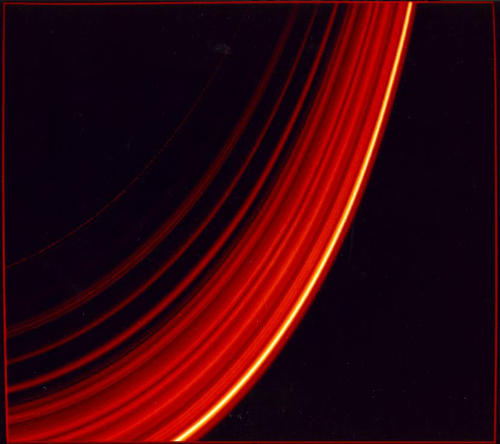Galileo Galilei was the first person to notice something strange around Saturn and in 1655, Christian Huygens studied the planet with a better telescope and wrote down his strange observations in code.
“It is girdled by a think flat ring, nowhere touching, included to the ecliptic.”

There are four main groups of rings around Saturn lying on the same plane, in-line with the planet’s equator. The rings extend outwards for about 170,000 miles. These rings are separated by distinct gaps and the rings are composed of pieces of ice coated rubble, orbiting the planet. More rings seem to be added over time as we get better data about Saturn. The source of Saturn’s rings are believed to be either the remnants of the original nebular material that formed Saturn or that they are what’s left of its former moon Veritas, which broke up because it came too close to the planet Saturn.

Saturn has been one of the favourite subjects of NASA when it comes to the study of planets in our solar system. There have been five unmanned missions to Saturn and its moons over the years, with some of the recent ones having included partnerships with the European Space Agency (ESA). The Saturn missions include:
- Pioneer 11
- Voyager 1
- Voyager 2
- Huygens (with ESA)
- Cassini (with ESA)